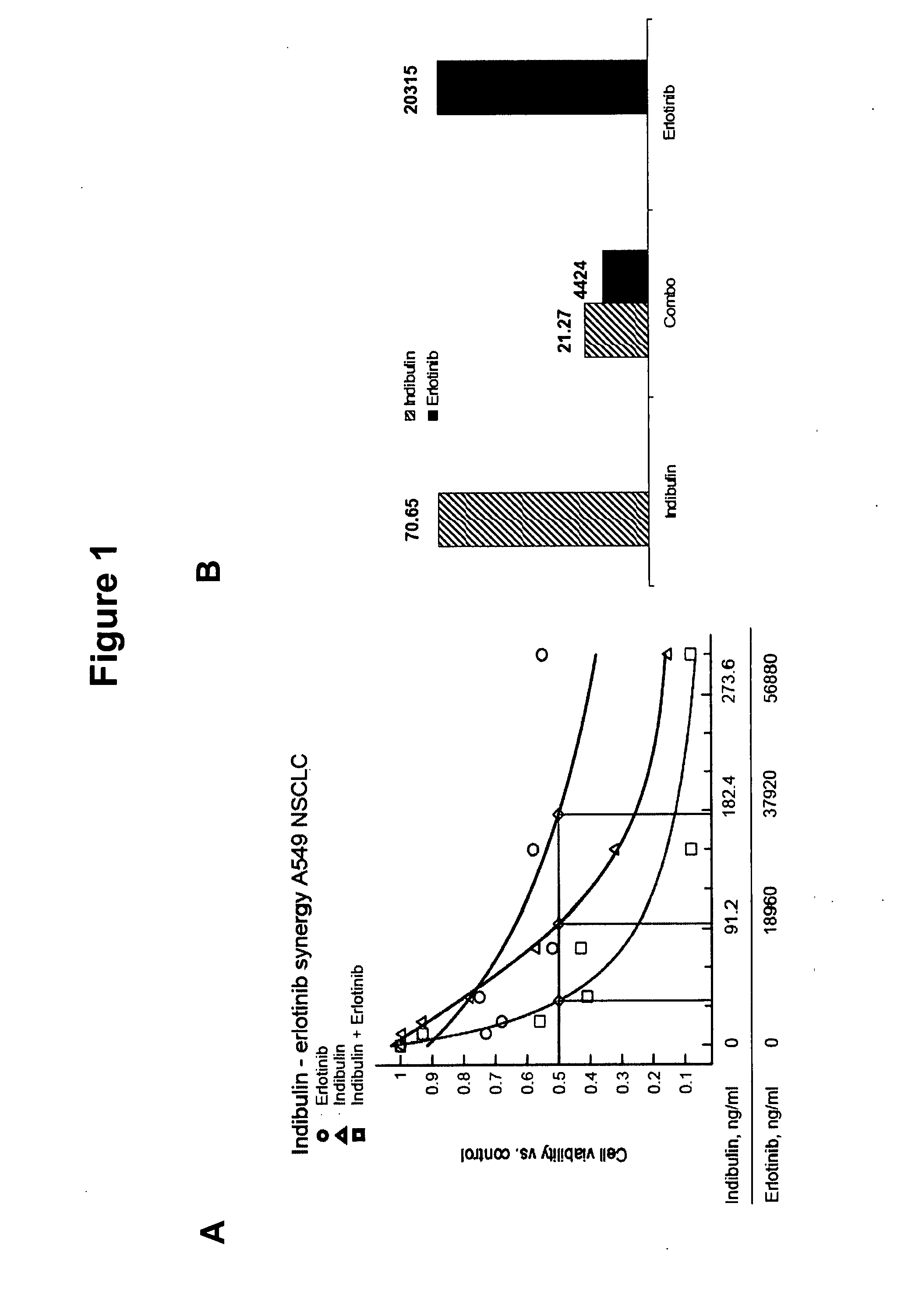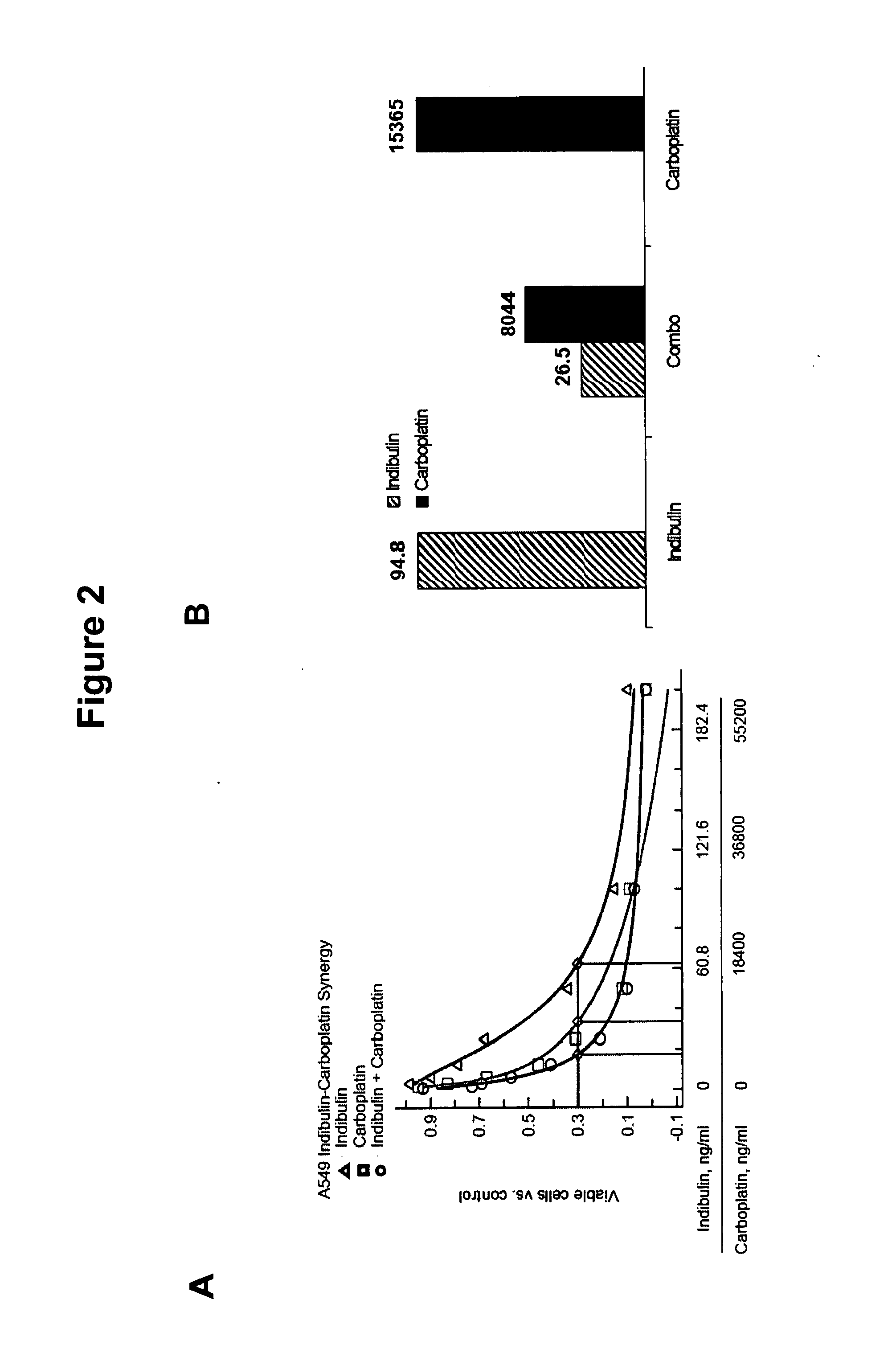Indibulin therapy
- Summary
- Abstract
- Description
- Claims
- Application Information
AI Technical Summary
Benefits of technology
Problems solved by technology
Method used
Image
Examples
example 1
[0146](N-(pyridin-4-yl)-[1-(4-chlorobenzyl)-indol-3-yl]-glyoxylic acid amide; also called indibulin and D-24851) is shown below.
[0147]To further define the tubulin binding site of indibulin, tritium labeled indibulin was incubated with purified bovine brain tubulin in the presence or absence of various tubulin binding agents. As shown in FIGS. 7 and 8, 3H-indibulin or 3H-colchicine were incubated with biotin-labeled calf brain tubulin. Where indicated, a 200-fold molar excess of cold competitor was added. Tubulin heterodimers were then precipitated with streptavidin-coated SPA beads and bound radioactivity was determined. “No tubulin” indicates non-specifically bound radioactivity measured in the absence of biotin-labeled tubulin. FIG. 7 shows that colchicine, nocodazole and podophyllotoxin (all bind to the same tubulin binding site) compete with 3H-indibulin for tubulin binding while inblastine and taxol do not compete. FIG. 8 shows that indibulin inhibits about 40% of 3H-colchicin...
example 2
[0149]Tubulin from neuronal tissue is post-translationally modified and the degree of modification increases during neuronal development. Calf brain neuronal tubulin and tubulin from other tissues differ in their post-translational modifications from that of adult bovine brain. Polymerization of purified calf brain tubulin was inhibited by increasing concentrations of indibulin, with an IC50 value of about 0.25 μM and a maximum inhibition of 90% as shown in FIG. 9. Tubulin polymerization is given as % over DMSO control. Polymerization of bovine brain tubulin was inhibited by indibulin only by 25% at the highest dose tested. In contrast vincristine or colchicine inhibited both, calf and bovine brain tubulin polymerization to a similar extent. The inability of indibulin to bind to neuronal tubulin supports the observed lack of neurotoxicity with indibulin in preclinical studies as well as in Phase 1 clinical trials.
example 3
[0150]Indibulin does not disrupt axonal microtubules of rat pheochromocytoma (PC12) cells. The outgrowth of neurites of PCl2 was induced by NGF for 5-6 days. Cells were subsequently treated with DMSO, indibulin or colchicine for 24 h (2×IC50 concentration each). Microtubules within the neurites, were visualized by immunostaining with an antibody recognizing acetylated (axonal) tubulin, leaving the cell bodies unstained. DMSO control and indibulin treated cells show identical staining patterns, indicating that indibulin did not affect axonal microtubules. In contrast, treatment with colchicine resulted in a strongly reduced and diffuse staining of microtubules indicating that microtubules were partially disrupted by colchicine.
PUM
| Property | Measurement | Unit |
|---|---|---|
| Mass | aaaaa | aaaaa |
| Mass | aaaaa | aaaaa |
| Time | aaaaa | aaaaa |
Abstract
Description
Claims
Application Information
 Login to View More
Login to View More - R&D
- Intellectual Property
- Life Sciences
- Materials
- Tech Scout
- Unparalleled Data Quality
- Higher Quality Content
- 60% Fewer Hallucinations
Browse by: Latest US Patents, China's latest patents, Technical Efficacy Thesaurus, Application Domain, Technology Topic, Popular Technical Reports.
© 2025 PatSnap. All rights reserved.Legal|Privacy policy|Modern Slavery Act Transparency Statement|Sitemap|About US| Contact US: help@patsnap.com



